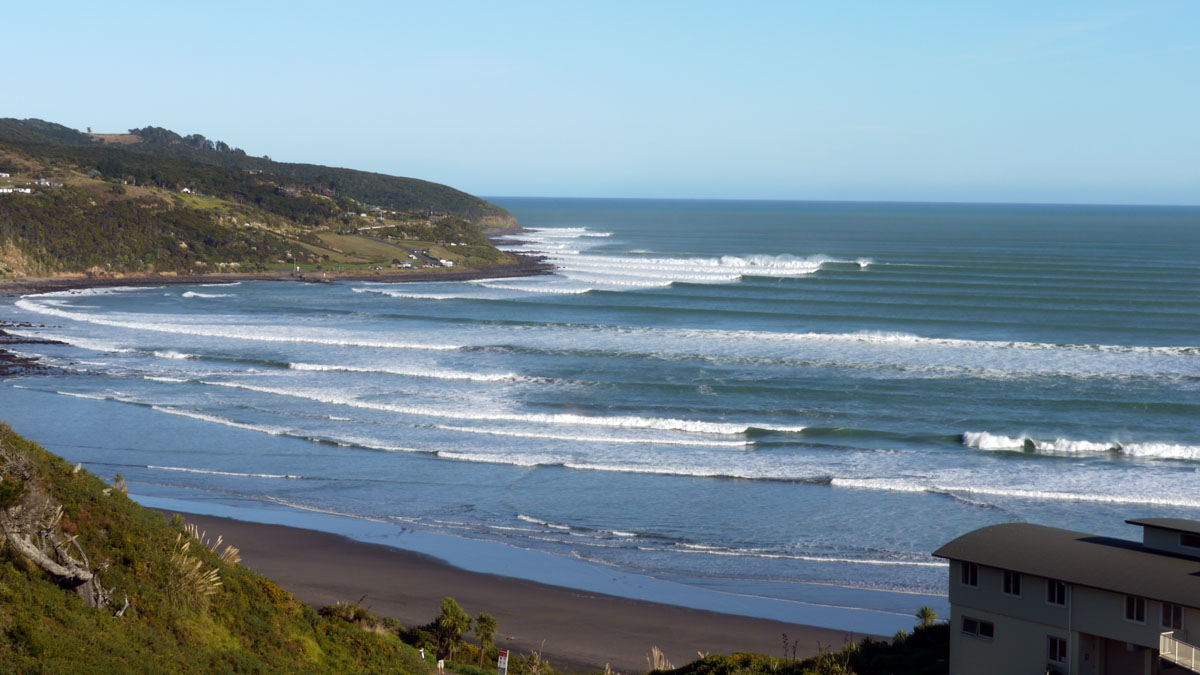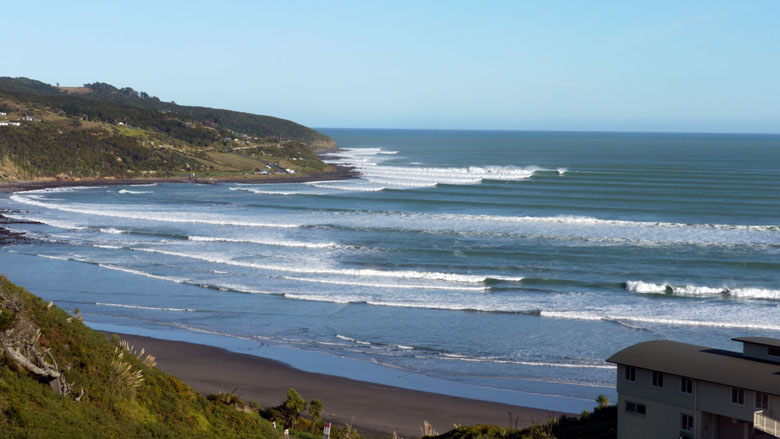

Located on an empty stretch of the North Island’s west coast, the tiny town of Raglan is the epicenter of surfing culture in New Zealand. A can’t-miss wave is at nearby Manu Bay above (aka The Point), renowned for being the world’s longest left-hand break. In perfect conditions the rides can be an astounding two kilometers or ten minutes long.
“Surf Highway 45” along the Taranaki coast offers access to some of the prime surfing beaches in New Zealand. This 105-km stretch between New Plymouth and Hawera covers 180 degrees of coastline, meaning if one side isn’t getting hit by a swell, the other side probably is. And, as if the beaches and waves weren’t enough, the famous Mt. Taranaki volcano (Mt. Egmont) looms large in the background.
The “winterless North” on the top of New Zealand’s North Island has the country’s warmest weather and ample surfing breaks to choose from. At some places it takes a mere 15 minutes to get from the Tasman coast to the Pacific Coast and vice-versa. One of the best waves in the Northland region is Shipwreck Bay at the southern end of Ninety Mile Beach.
People come to Kaikoura primarily for the whale-watching but it’s also a fantastic place to surf. Some of the most popular breaks are Kahutara (19 km south of town) and Mangamaunu (16 km north of town), the latter being one of New Zealand’s best rights. On the whole, the coastline north of Kaikoura is an ideal place to explore a number of off-the-beaten-path surf spots.
The conditions can be challenging and downright cold, but Dunedin and the Otago Peninsula may offer the best surfing on the South Island. For waves close to the city, St. Clair beach is just ten minutes from downtown, but the trip to the Otago Peninsula is worthwhile. There are few surfers and a number of excellent breaks including Allans Beach and Sandfly Bay.